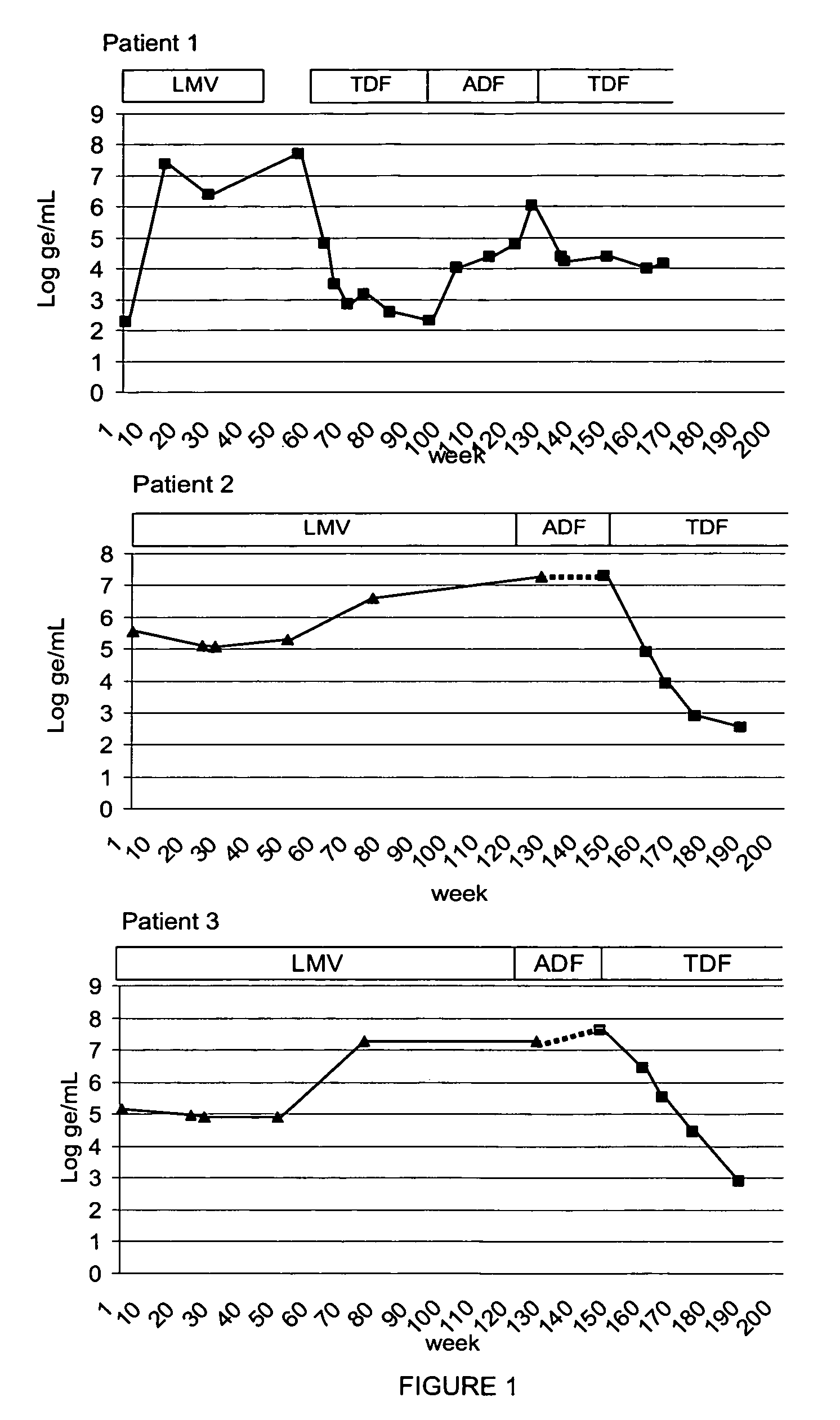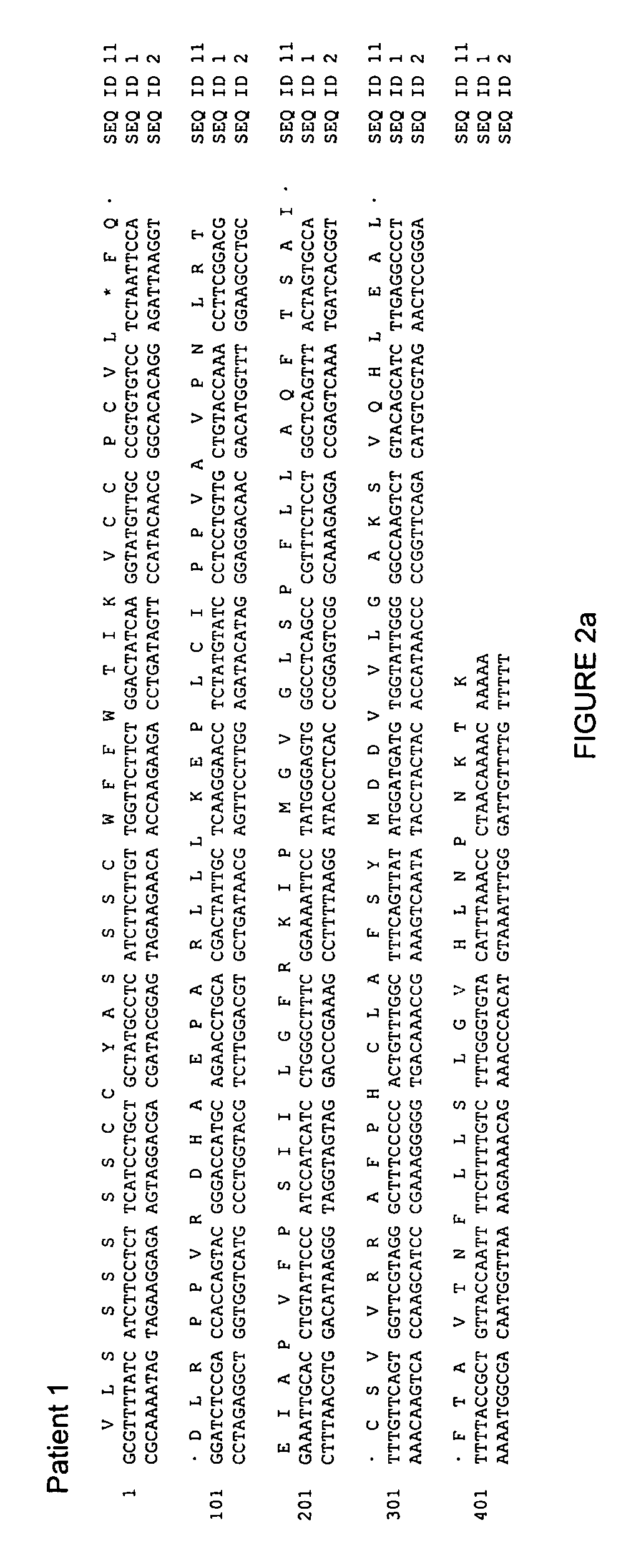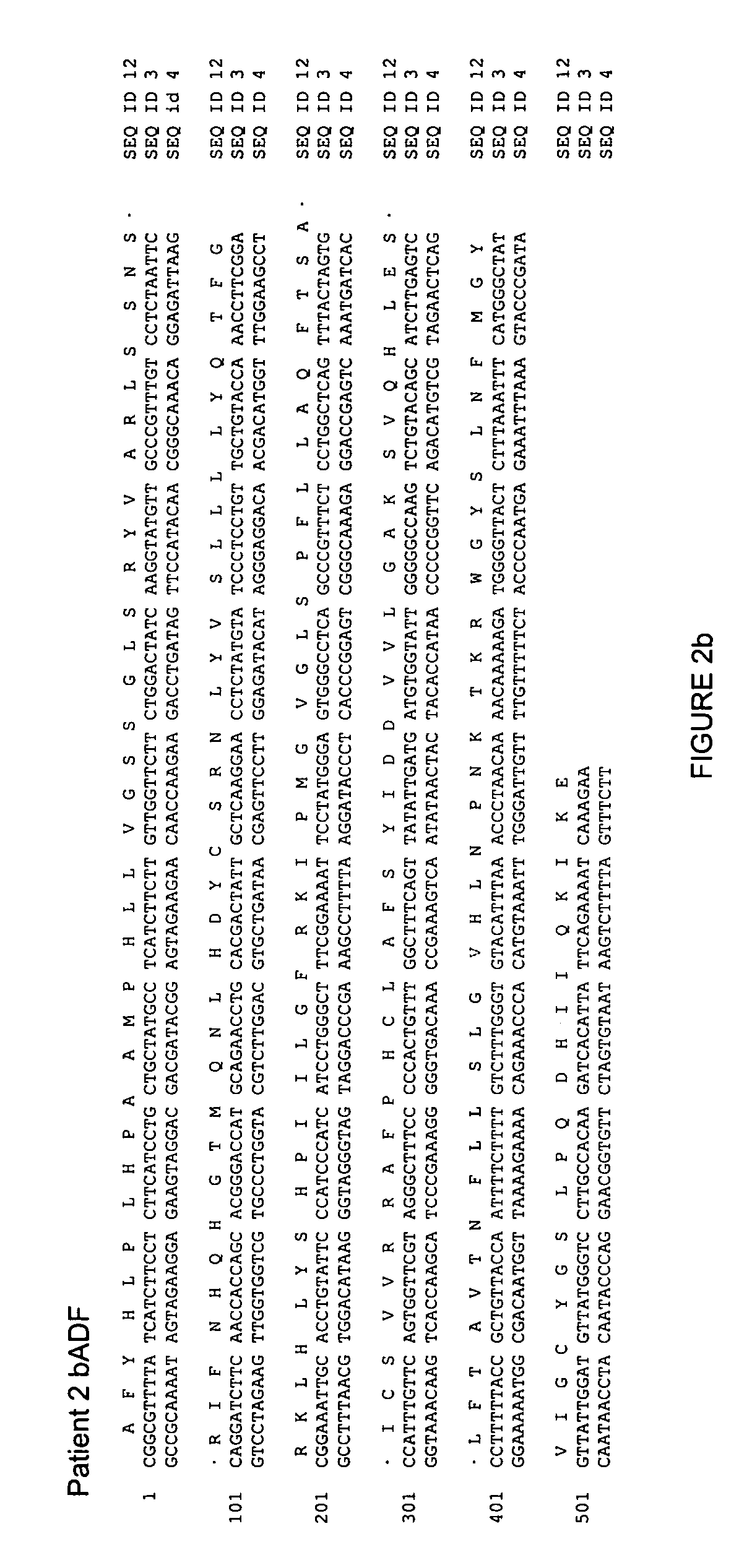Variants of hepatitis B virus resistant against some nucleoside analogues, but sensitive to others, and uses thereof
a technology nucleoside analogues, applied in the field of hepatitis b virus, can solve the problems of acute liver failure, 8-15% of patients do not achieve a significant reduction in hbv dna levels,
- Summary
- Abstract
- Description
- Claims
- Application Information
AI Technical Summary
Benefits of technology
Problems solved by technology
Method used
Image
Examples
example 1
Case Study patient 1
[0185]Patient 1, a 52 year old Caucasian male, had suffered for over 5 years from chronic hepatitis B. He had received an unsuccessful therapy with PegIntron and thereafter an initially effective therapy with 100 mg / d LMV which suppressed viremia to levels 7 g / ml (see FIG. 1). After an interval without therapy, 100 mg / d of the RT inhibitor and licensed HIV medication tenofovir (TDF) was administered as an experimental drug against hepatitis B virus for 9 months and viremia decreased within 3 months from 5.5×107 ge / ml to 740 ge / ml and remained at similar levels for another 6 months. The lamivudine resistance mutation in the reverse transcriptase domain from methionine 204 to isoleucine rtM204V had already reverted to wildtype (wt) before the tenofovir therapy (see FIG. 3). Thereafter, TDF was replaced by 10 mg / d of the RT inhibitor ADF because this drug had meanwhile been licensed for therapy of chronic hepatitis B. However, under this therapy viremia increased im...
example 2
Case Studies of Patients 2 and 3
[0186]Patients 2 and 3 are a married couple. The husband, a 56 year old Caucasian male had received a liver transplant in 1993 because of alcoholic liver disease and became HBV-infected during follow-up. He was under constant immune suppression. His wife (Caucasian, 52 years, patient 3) was found to be chronically HBV infected in 1994. The genome sequences of their HBVs were very similar but he had a precore-negative mutant with the stop codon mutant G1896A as the predominant variant whereas she had only the wildtype, however, both were HBeAg positive. Both received lamivudine and their viremia dropped initially from >107 g / ml to levels 5 g / ml, but finally resistance developed and viremia again increased (see FIG. 1). Both had the lamivudine resistance-associated mutation rtM204I and she had furthermore rtV173L (see FIG. 3). Lamivudine was replaced by adefovir, but it was not effective. With patient 2 viremia increased under therapy, with patient 3 it...
example 3
Effect of Antiviral Therapy and Nucleotide Sequences
[0187]After about 18 month of lamivudine therapy, the viral load increased due to lamivudine resistance mutations (rtM204I for patients 2 and 3). Therefore adefovir was introduced into the drug regimen. Surprisingly, although none of the mutations hitherto known or supposed to mediate adefovir resistance: rtA181V (Yang et al., 2003), rtN236T (Angus et al., 2003); rtL217R (Schildgen et al., 2004), see supra, was observed, the patients did not show even an initial response to this drug. Instead a common mutation at the codon position 233 (IV), that may mediate the drug resistance was identified. The initial nonresponse to adefovir may be caused by the fact, that the mutation was already present when the adefovir therapy started (FIG. 3).
PUM
| Property | Measurement | Unit |
|---|---|---|
| temperature | aaaaa | aaaaa |
| temperature | aaaaa | aaaaa |
| temperature | aaaaa | aaaaa |
Abstract
Description
Claims
Application Information
 Login to View More
Login to View More - R&D
- Intellectual Property
- Life Sciences
- Materials
- Tech Scout
- Unparalleled Data Quality
- Higher Quality Content
- 60% Fewer Hallucinations
Browse by: Latest US Patents, China's latest patents, Technical Efficacy Thesaurus, Application Domain, Technology Topic, Popular Technical Reports.
© 2025 PatSnap. All rights reserved.Legal|Privacy policy|Modern Slavery Act Transparency Statement|Sitemap|About US| Contact US: help@patsnap.com



